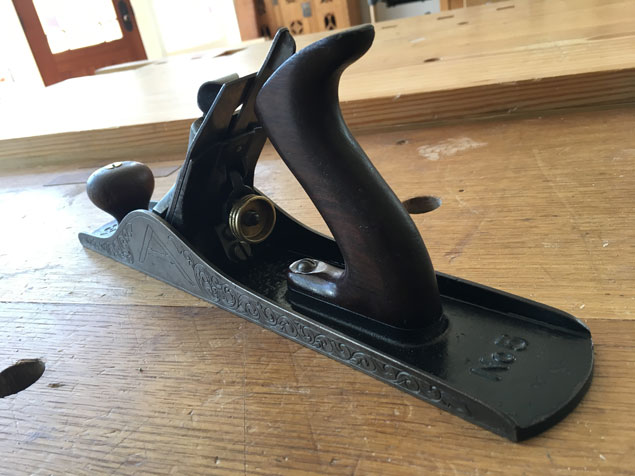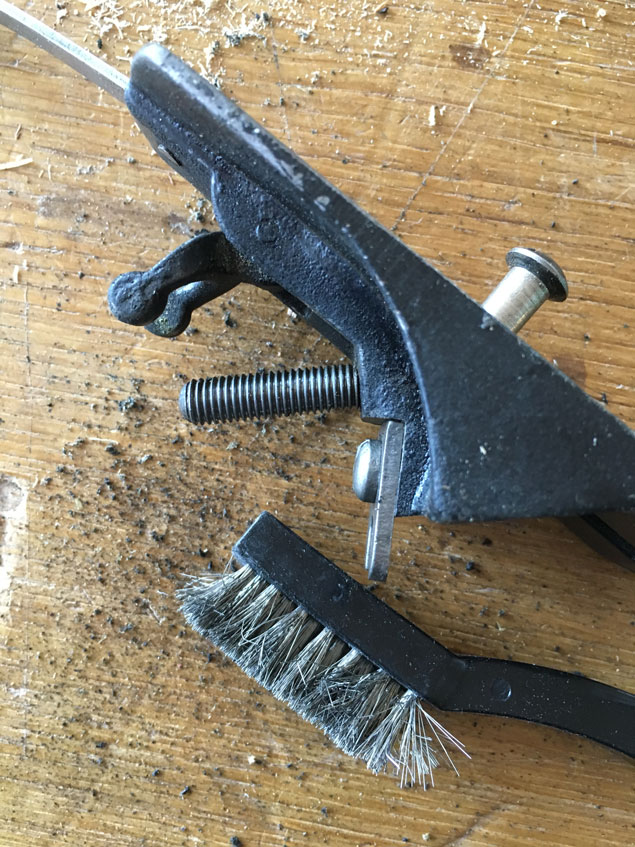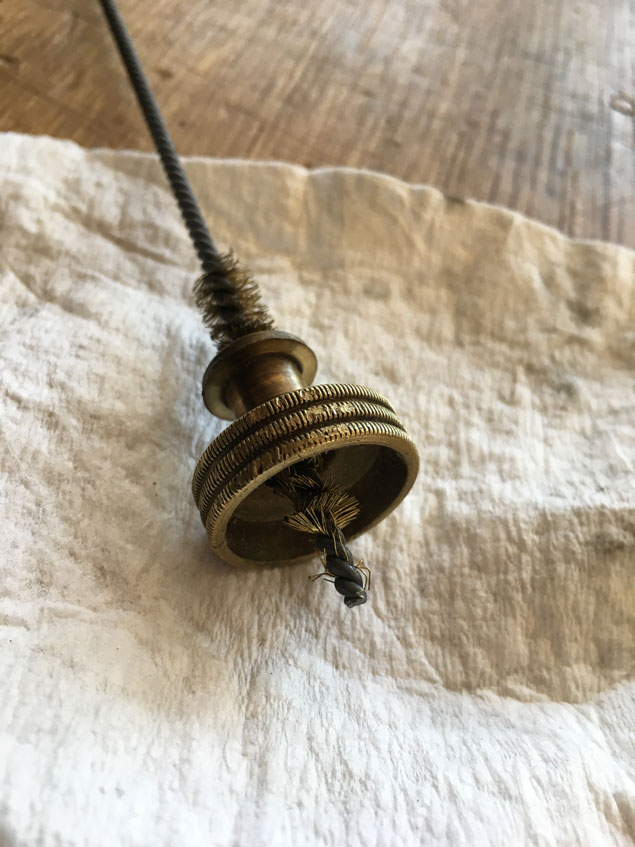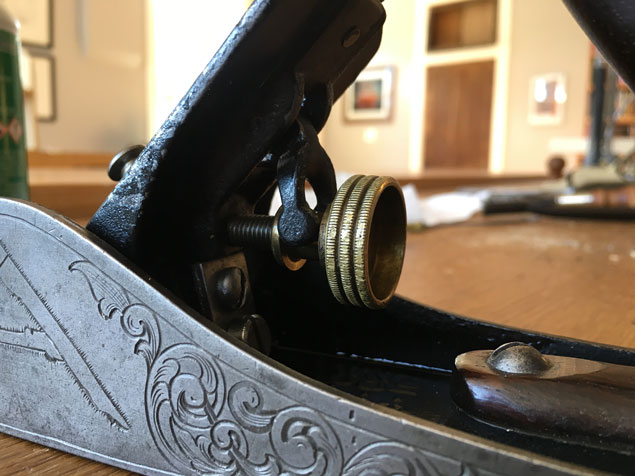We may receive a commission when you use our affiliate links. However, this does not impact our recommendations.
Metal-bodied planes require so little maintenance (aside from sharpening) that it’s easy to forget that they do need some love every year to work smoothly.
Recently I borrowed a friend’s smoothing plane to demonstrate a cut and was struck by how easily her iron adjusted. It was like silk. I thought my plane was in good shape, but I was way off the mark.
So as soon as I delivered the two commissions on my bench to the customer, I stripped down my planes to give them some long-overdue cleaning.
Take the plane entirely apart. Remove the adjuster from its threaded post. Pull all the screws from the frog.
Clean the threaded post with a wire brush until you get it down to bare metal. Even a little bit of rust or gunk will foul the adjuster and make it difficult to advance and retract. Then take a wire pipe cleaner and screw it into your adjuster’s nut (it’s reverse-threaded) to remove any gunk in there.
I was shocked at how much crap was in my threads. It was like forgetting to floss for a year and finding last Christmas’s bacon….
Coat the threads with a light machine oil. Heavy bodied oils are OK, but they seem to attract more dust in my experience.
Now perform the same routine on all the other screws on the plane, including the screws that hold and adjust the frog. And don’t forget the main adjusting screw that holds together the cap iron, iron and lever cap. That thing gets filthy.
Wipe down everything with an oily rag and reassemble the tool.
Your will be shocked and amazed at how much easier adjusting the tool will become.
— Christopher Schwarz
If you want more handplane advice such as this, check out my book “Handplane Essentials,” which has been recently revised and expanded.
Here are some supplies and tools we find essential in our everyday work around the shop. We may receive a commission from sales referred by our links; however, we have carefully selected these products for their usefulness and quality.













Thanks for the reminder. Your blogs are always a pleasure. Good info or good humor, usually both. (ps: thanks for the recent tip on Shapton stones)
Spending time fixing up old planes makes you become very sensitive to the feel, so you can’t help but notice when your users start behaving less well. I suspect back when you did fix up more tools, you would not have let this plane get to this state.
This is one reason it can be fun to buy and fix up older planes. If they are really nice, they can swap into the regular fleet. Or they can be available for use by, or be passed on to, others.
While most of what’s written about plane rehab pertains to the difficult cases, many older planes only need what you describe here, and of course sharpening.
Just finished doing this! Although I used WD40…ugh…actually just found similar advice yesterday, AFTER cleaning, that WD40 is NOT the best choice for this as it attracts the gunk, but what is the best way to remove it? I am thinking of using the same dry lubricant spray I use on blades and bits.
I try and do this once a year before the start of my winter woodworking season. It’s a good way to start off the woodworking season after a summer of disuse.
I recently did a similar over all cleaning minus the removal of the frog (the planes are 2 years old) but had the same results a little cleaning and some 3 and 1 oil goes a long way.
I use a Dri-Slide instead of light oil (WD40). It doesn’t attract dirt at all and lasts much longer. However, know that it leaves a black residue where you apply it so apply sparingly and wipe off any excess before putting the tool to use or you’ll be cursing the God of skid-marks.
Does 3-in-1 oil count as light machine oil? Where would jojoba rank?
Why am I just now hearing about Christmas bacon?!?
Fantastic advice as usual! I definitely slack off on maintenance of all types for my tools (gasp)…that’ll be my priority during a break in commission work!